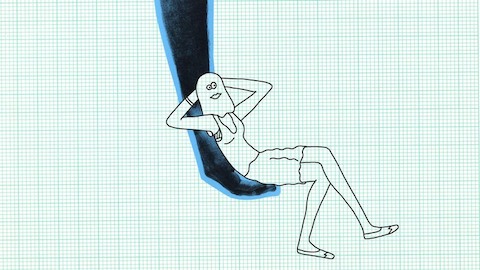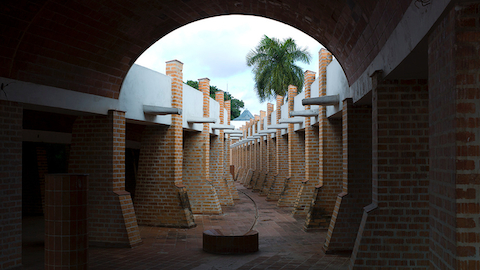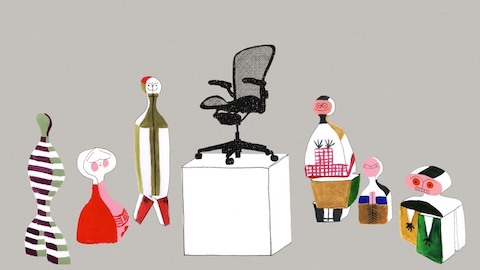Buddy Lazier had a good feeling going into the 1996 Indy Car season. He’d spent the first 28 laps of the year’s first qualifying race—the Indy 200 at Walt Disney World—in the lead, and after seven years in the circuit, he felt finally he had a car that could win the Indianapolis 500.
A second-generation Indy Car driver, Lazier had watched his father, Bob Lazier, race at the Indianapolis Motor Speedway only once, in 1981. A blown engine on Lap 154 ended Bob’s race day prematurely, and the resulting 19th place finish would be the closest the elder Lazier would ever get to winning at the Brickyard. The experience taught the younger Lazier an important lesson: Every chance you get to compete in the Indy 500 could be your last, so make it count. There’s no guarantee you’ll ever make it back.
Lazier’s next race was the Dura Lube 200 in Phoenix, and it had a similarly promising start. As Lazier recalls the events of that day, he had just completed a one-mile practice lap at record speed. “I was wide open, and just as I hit Turn 1, the rear wing shot about a thousand feet in the air, and when that happens, you lose about a thousand pounds of down force. So in a fraction of a second, I swapped ends and went backwards into the reinforced concrete wall surrounding Turn 2.”
The impact fractured Lazier’s lower back, pelvis, and sacrum in 43 places. He went in and out of consciousness as emergency crews cut him out of the racecar and airlifted him to a local hospital, where he spent a painful two and a half weeks in the ICU. When Lazier finally returned home to Colorado, he still could not walk. The 1996 Indy 500 was less than six weeks away.
Around that time, the Indy Car world had started to pay attention to the work of Dr. Brock Walker. A former competitive skier with a doctorate in chiropractic, Walker had sold his Michigan-based clinical practice in 1990 to refine and test his theories about human performance in high G-force applications. Through the early 90s, Walker developed several racing seats for numerous Indy Car drivers, gathering feedback on what worked and making improvements on what didn’t. With each prototype, he built a stronger case for his theory that the sacrum—the area of the lower back below the belt line where the spinal column connects to the pelvis—is the primary place the seated body needs support. With firm sacral support engaged, the pelvis tilts forward naturally—the way it does when a person stands upright.
“All of my work was based on one idea: How to position the human body in such a way that allows it to generate its most efficient horsepower,” Walker says. “If you’re positioned in the right manner and supported in the right places, you’re also going to be more comfortable and you’ll be able to sustain your position for a longer period of time. If you focus on empowering the body, comfort will be a natural byproduct.” And if ever there was a driver in need of comfort, it was Buddy Lazier in 1996.
When Bob Lazier contacted Brock and asked him to design a custom seat that might allow Buddy to compete in the 1996 Indy 500, Walker did not want to get involved. (“I thought to myself, ‘Your family is crazy.’”) But Bob persisted. Once Walker realized that Lazier was going to race with or without his help, he agreed to travel to Indianapolis and see what he could do.
“I can clearly remember walking in the garage and pretty much everybody had a long face,” Walker says. “Buddy wasn’t really able to stand, sit, or lay down.” Lazier couldn’t take pain medication because then he couldn’t drive the car. So Walker went to work on a solution for him, and a seat that probably should’ve taken two years to develop was fashioned in just three short weeks.
“We needed to distribute the load of Buddy’s body in the cockpit in order for the pelvis and the sacrum not to carry all his weight,” Walker explains. “We needed to put him in a kind of suspension that would enhance his feeling for the car, nesting certain areas of anatomy, supporting certain areas, and stabilizing certain areas—with less stress on the sacrum.” Walker hoped that the seat he built could enable Lazier to complete 25 laps. “With his high degree of pain, that would be a big deal,” Walker says. Lazier was able to do ever better. He completed all 200 laps—and did so faster than any other driver in the race that year.
“All of my work was based on one idea: How to position the human body in such a way that allows it to generate its most efficient horsepower. If you’re positioned in the right manner and supported in the right places, you’re also going to be more comfortable.”
— Brock Walker
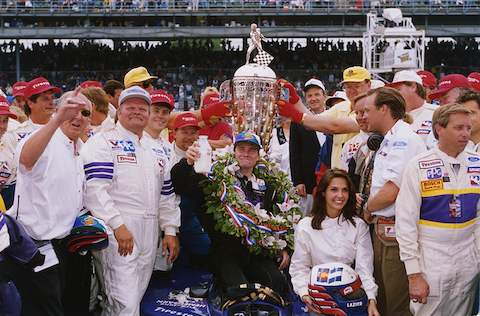
1996 Indianapolis 500 winner Buddy Lazier poses in victory lane with members of the Hemelgarn Racing team and his wife, Kara Lazier. His injured back made it too painful for him to stand during the celebration, so he received his ceremonial bottle of milk while seated on his car.
“He knew I needed something that was ahead of its time, and he just designed it right there in Gasoline Alley,” Lazier recalls. “It cradled me in the race car, but still enabled me to move the way that I needed to move.” He adds, “Would I have won the Indy 500 without his seat? I’ll never know, but I sure as hell wouldn’t have wanted to try.”
In the weeks after his victory, Lazier continued to heal. However, the instant notoriety that accompanies an Indy 500 win wasn’t conducive to rest and recovery. Lazier wondered whether Walker’s design concept, which enabled him to sit in his racecar relatively pain-free, could be applied to an office chair that would allow him to endure hours of interview questions more comfortably. Brock visited Buddy in Colorado and retrofitted an old chair from Lazier’s father’s warehouse with a device that became the precursor to Walker’s PostureFit sacral support.
That chair might have been a one-off solution had Herman Miller executives not heard about Brock’s research. Meetings were scheduled in November 2000, and Walker laid out his theories for the seating team at Herman Miller, including Don Goeman, Executive Vice President for Research/Design/Development. “Brock brought in a whole car seat,” Goeman says. “When we sat in it, we could really feel the difference in what he was describing.”
Walker ultimately swayed the Herman Miller team that lumbar support, while making people feel more comfortable in the moment, didn’t necessarily increase their long-term comfort. Armed with this new insight, the team moved on to the next question: How to commercialize the technology?
At the time, the Aeron Chair represented the epitome of Herman Miller’s insight and understanding of ergonomics. It was also the most popular product in the company’s history. Altering its iconic design would be risky, but as Goeman explains, adding sacral support to Aeron was the best way to demonstrate the company’s commitment to state of the art comfort and support. “It was an ergonomic theory,” he says, “and if we were going to drive a stake in the ground, we felt the best place to demonstrate that was with the Aeron Chair.”
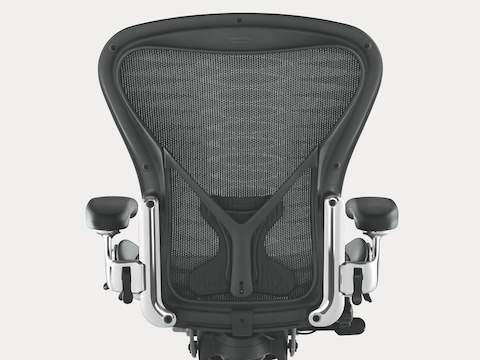
PostureFit sacral support was added to the Aeron Chair as an option in 2002 and has been part
of the design of every Herman Miller office chair developed since then.
Herman Miller added a PostureFit option to Aeron in 2002. But the company’s work with Brock Walker didn’t stop there. Moving forward, PostureFit would be part of every new Herman Miller performance work chair design. That level of commitment was something Goeman learned from Aeron designer Bill Stumpf.
“Stumpf would say that if you subscribe to the belief that the problem you’re solving is really important, and you solve for it in one product but fail to go back and acknowledge that solution across the board in other products, you ultimately take away from the validity of the problem,” Goeman says. Today, PostureFit sacral support is standard on Mirra (2003), Celle (2005), Embody (2008), Sayl (2010), and Mirra 2 (2013) chairs.
According to Goeman, the value of Herman Miller’s partnership with Walker is apparent in every performance work chair the company makes. “Brock has brought this synthesis of insight to the core teams on a number of seating projects, and we’ve used that to get the fit and the performance to a better place than we would have achieved on our own,” Goeman says. “[Herman Miller’s founding CEO] D. J. De Pree taught us to be comfortable abandoning ourselves to the creative view of someone outside the business,” he says. “And while Brock isn’t a designer giving us a vision for a product, he has given us a vision for ergonomics.”

